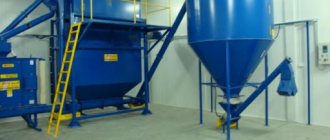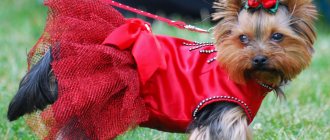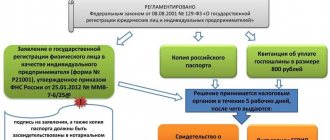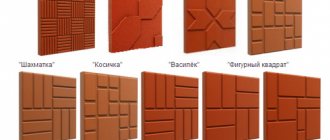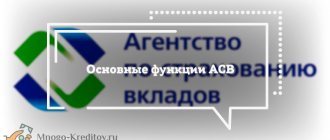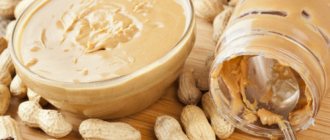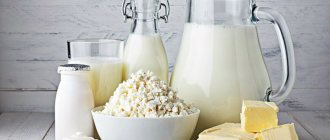Business relevance
The production of food for animals and other pets increases by 20% every year. Experts believe that the most profitable industry right now is the production of dry food for cats and dogs. The need is growing due to the increase in the number of pets, and the main increase is made up of those users who abandoned homemade products in favor of store-bought ones. According to statistics, 70% of feed is purchased for cats, and 30% for dogs.
For a month this is about 600 rubles for one cat. For a dog this figure is twice as much.
Types of feed mixtures
The technology used to produce it will depend on what kind of feed will be put into production.
There are 3 types:
- Complete – contains everything needed to fully provide the animal with everything necessary.
- Concentrated – with increased protein content.
- Mineral supplements – include minerals and vitamins.
The production of feed with different compositions is explained by different applications. Some mixtures are designed to increase milk yield or egg production, while others allow you to quickly increase meat mass. Finished products come in the form of:
- scatterings of small particles resembling flour;
- granules;
- briquettes (pressed into bars).
Successful businessmen recommend choosing the production of feed in granules. They are in great demand.
Advantages and types of purchased feed
- Saves time (no need to cook food).
- Balanced composition.
- Convenient release form.
Food for cats and dogs is produced in several categories:
- Economy class;
- standard, approximately 50% more expensive;
- premium, 170% more expensive than standard.
The more expensive the food, the better its quality, the more useful additives it should contain.
Types of cat food:
- dry (most popular);
- wet;
- canned.
There is a subcategory of food for sterilized animals, dietary, for kittens and cats over 8 years old. Special nutrition has been developed for individual breeds.
Dry and wet products are prepared from cereals, meat and fat (a small part), adding vitamins and microelements. Canned foods contain more meat, offal, cartilage, bone meal, and fat. Additives are the same as for dry ones. Sometimes cereals are used.
Step-by-step feed production technology
The feed manufacturing technology will depend on the chosen molding method, the presence or absence of certain equipment, and the selected recipe. All the basic steps using various instruments are described below. This should help you understand the sequence and specifics of the process of making compound feed at home.
Step 1
Measure out all the ingredients for the selected feed recipe using a scale.
Step 2
Pass them through a grain crusher. Some entrepreneurs do this in advance, grinding wheat, oats, peas, corn, etc. and storing them in separate barrels. This saves time and reduces the number of tasks during the production of the finished mixture. So instead of taking the first two steps, they take one by simply measuring out the ingredients.
Step 3
Pour ingredients into mixer. This should be done one at a time. If the feed contains liquids, for example, sunflower oil, they should be poured into the machine last. If you produce loose non-extruded feed, this is where its preparation ends. The mixture is weighed and packaged. As mentioned earlier, some people who make their own feed mix the mixture by hand, without using a mixer.
Step 4
If you have an extruder, you should use it immediately after mixing the ingredients. There the mixture is subjected to heat treatment. At the exit, it becomes like “sausages”, which can be easily returned to a crumbly state by simply kneading them with your hands or any suitable object in a deep container.
Step 5
Next, a granulator is used (of course, if you have chosen this particular molding method). The mixture is poured into the granulator and comes out in the form of granules.
Step 6
The feed is cooled and packed into bags.
Manufacturing technology
- Production of dry food for cats and dogs
Dry food is produced using the following methods:
- evaporation;
- pressing;
- granulation.
They are all similar in the early stages. The differences start at the last one.
Pressing is used most often. Its main stages:
- The raw materials are ground with a hammer crusher to the consistency of coarse flour.
- They are mixed with a ribbon mixer, all substances are evenly distributed.
- During pressing, the mixture enters the extruder. Hot water is also supplied there. Under the influence of high temperature, the composition is squeezed out through the heads, inflated like popcorn, and granules are formed from it.
- They stay in the dryer for up to 20 minutes. Their humidity is up to 10%.
- The granules are cooled, glazed (coated with a layer of fat and various additives that improve the taste), and packaged.
- Production of wet food
Pressing in an extruder occurs at a low temperature. The granules are enriched with moisture up to 25%. They don't dry out. To prevent them from becoming affected by mold during storage, inhibitors are added. Packed in sealed packaging that retains moisture.
- Production of canned feed
- All ingredients are mixed in a mixer. When exposed to high temperatures, starch takes on a jelly-like form.
- The jars are treated with steam. The hot mixture is placed in them.
- The jars are sealed.
- Sterilized.
- Cool.
- Labels are glued and placed in boxes.
The percentage ratio, feed composition, and technologies of each major manufacturer differ in their “zest”. The tastier and better quality the product, the higher the income.
A good recipe is not cheap and difficult to find. It can be obtained along with a line of equipment, but it is not always possible to create high-quality feed using it. You need to please both pets and their owners. Therefore, the creation and production of tasty, inexpensive and high-quality goods is one of the main conditions for business promotion.
Planning the range of produced feeds
It is better for a novice entrepreneur to organize a workshop for the production and sale of feed in bulk. In this case, you can significantly save initial costs and time - there is no need to develop and register a trademark. Branding sometimes takes up to 12 months. Over time, when the company reaches the break-even point, you can organize the production of dry dog food under your own brand. This way the manufactured products will become recognizable to customers.
Whatever “scenario” for business development you choose, first of all think about the range of products. The type of equipment and raw materials purchased will depend on this.
Main product division:
- Dry food. These products are presented on the market in a huge range. Its production will not require significant costs for the purchase of raw materials. The product does not require special packaging - it can be stored in paper or plastic bags until shipment to customers. Russian-made dry dog food will definitely be in demand among pet owners, since it is inexpensive.
- Wet food. This type of product is more natural and, according to veterinarians, is better suited for pets. An entrepreneur must provide for the production of wet food, since its price is slightly higher than dry food.
Feeds are also divided into subspecies. Specialized stores sell products intended for different dogs - active, small, purebred. And this is quite an impressive market segment! And if at first such food may not be included in the main product line, then be sure to think about it in the future.
The business plan for manufacturing dog food also contains a description of product recipes. A person who is not knowledgeable about the rules of feeding pets will have to entrust this matter to specialists - veterinarians. For each type of food, specifications are drawn up, which will be followed in the future when producing food for dogs. The production of natural dog food can be supplemented by the production of “snacks” for pets - special crackers, bones, chips. Additional costs for equipment will be required, but this way you will expand the range to the maximum.
When working through your assortment, remember that your products should be somewhat different from those that your competitors supply to the market. This can then be used as the main advertising move.
Financial part
- Equipment – from 500 thousand rubles. up to 1 million rubles
- Its installation costs 20,000 rubles.
- Arrangement of the premises - 180,000 rubles.
Total: 700,000 – 1,200,000 rubles.
Every month you need:
- Purchase of raw materials – 90 thousand rubles.
- Salary – from 50 thousand rubles.
- Building rent – 80 thousand rubles.
- Other expenses – 80 thousand rubles.
Total: 300 thousand rubles.
Total: 1 million -1.5 million rubles.
Line productivity per shift is 1 ton.
Cost 7-8 thousand rubles. (including the purchase of raw materials, electricity, wages and packaging).
Wholesale price 14-15 thousand rubles.
Profit for 22 working days: 7,000 x 22 = 154,000 rubles.
State support for processing animal waste
In Russia, programs to support livestock farming, as well as support for waste processing, are poorly developed. Subsidization is carried out in Siberia, in particular in the Krasnoyarsk Territory. There, a certain percentage of funds that were spent on the construction or improvement of enterprises processing animal waste is compensated.
In Udmurtia, with the support of the state, entire waste processing and disposal systems were created, including the processing of livestock by-products.
There are many pet products from well-known brands on the market. Therefore, it is not easy to interest buyers. Can:
- offer affiliate programs to pet stores.
- sponsor events and animal exhibitions.
- organize cooperation with informal communities of cat and dog lovers not so much for sales as for disseminating information about the product.
- publish information about products in the regional media.
- distribute leaflets in public places.
Spoiled meat from stores
Every day, scrapped meat, spoiled fish and poultry arrive from supermarkets to factories - and all this is sent to the meat grinder directly in polystyrene trays and cling film. There is simply no time for the painstaking work of unpacking and unfolding.
Plastic livestock tags, pesticide patches, and even the plastic bags in which dead animals arrive from veterinary clinics and shelters all go down the well. Plastic, paper, cardboard - everything is ground in a meat grinder.
It’s hard to believe, but very often the raw material used in animal feed is what’s left over from the production of human food—it’s usually classified as “unfit for human consumption.”
Features, risks, disadvantages
- Cheap equipment often breaks down, leading to downtime and additional investment.
- Food from an unknown company may not be in demand for a long time.
- The products themselves, made according to a questionable recipe, may turn out to be of poor quality.
- Raw material prices may rise.
The production and trade of treats for dogs and cats gives you a greater chance of making a profit. These are sausages, cookies, bait. The starting capital here is from 700 thousand rubles.
Download for free a short business plan for the production of food for cats and dogs (.rar file):
Example 1
Feed production equipment
The main component necessary to implement this business idea during the 2021 crisis is a set of units that perform the operations prescribed by the technology. The easiest way is to buy one of the ready-made lines offered in Russia by representatives of Chinese manufacturers. For example, a medium-power model with the following parameters will cost 1,950,000 rubles:
- Line productivity - 500 kg/h;
- Energy consumption - 108 kW;
- Occupied area - 90 m²;
- Required personnel - 5 people.
A complete list of equipment for the production of food for dogs and cats, built on the basis of this line, will include the following items:
Feed production equipment
| Position | price, rub. | Quantity, pcs. | Amount, rub. |
| Engineering systems | |||
| Ventilation system | – | – | 100000 |
| Security and fire alarms | – | – | 25000 |
| General lighting | – | – | 60000 |
| Power supply system | – | – | 50000 |
| Switchboard | 6500 | 2 | 13000 |
| Production Line | |||
| Raw material crusher | – | 1 | – |
| Mixer for preparing the mixture | – | 1 | – |
| Screw conveyor | – | 2 | – |
| Storage hopper for raw materials | – | 2 | – |
| Screw conveyor | – | 2 | – |
| Steam generator | – | 1 | – |
| Extruder | – | 1 | – |
| Screw conveyor | – | 1 | – |
| Bunker for semi-finished products | – | 1 | – |
| Scraper conveyor | – | 1 | – |
| Multi-level tunnel kiln | – | 1 | – |
| Receiving hopper | – | 1 | – |
| Screw conveyor | – | 1 | – |
| Tunnel pelletizer | – | 1 | – |
| Screw conveyor | – | 1 | – |
| Receiving hopper | – | 1 | – |
| Packing machine | – | 1 | – |
| Line cost: | – | – | 1950000 |
| Office rooms | |||
| Office table | 3500 | 5 | 17500 |
| Chair | 1000 | 10 | 10000 |
| Computer | 16000 | 5 | 80000 |
| Specialized software | 30000 | 1 | 30000 |
| Multifunction device | 9500 | 1 | 9500 |
| Telephone set | 1500 | 2 | 3000 |
| Stationery | – | – | 10000 |
| Cabinets, cabinets | – | – | 12000 |
| Hanger | 2500 | 1 | 2500 |
| Utility rooms | |||
| Dining table | 2000 | 3 | 6000 |
| Chair | 700 | 12 | 8400 |
| Microwave oven | 2500 | 1 | 2500 |
| Water heater | 5000 | 1 | 5000 |
| Fridge | 11000 | 1 | 11000 |
| Electric kettle | 600 | 1 | 600 |
| Clothes locker | 2200 | 12 | 26400 |
| Bathroom set with shower | 25000 | 1 | 25000 |
| Other equipment | |||
| Refrigerating chamber for raw materials 4 m³ | 61300 | 1 | 61300 |
| Truck "Gazelle" | 280000 | 1 | 280000 |
| Electric stacker | 252000 | 1 | 252000 |
| Hydraulic trolley | 13000 | 2 | 26000 |
| Pallet | 140 | 20 | 2800 |
| Warehouse rack | 7500 | 4 | 30000 |
| Fire extinguisher | 2200 | 10 | 22000 |
| Total: | 3131500 | ||
Market analysis
Currently, the expansion of the Russian feed market is closely related to the development of various areas of livestock farming, which creates demand for these products. The poultry farming industry is developing most actively; the growth of these farms is taking place in numerous regions of the Russian Federation, and their activities are aimed at producing products for export.
Unlike poultry farming, pig farming is developing unstably, which is due to the high level of competition from foreign suppliers. Such companies supply meat products at low prices; Russian farmers do not have such an opportunity for reasons such as:
- wear and tear of the material and technical base;
- low results of breeding work.
Cattle production is currently in a difficult state and growth in this industry is expected only by 2020 due to the implementation of the state target program. Based on an analysis of the development of livestock industries, we can conclude that the growth of the feed market in the Russian Federation occurs only through the use of these products by poultry farms.
Demand for products
Today, feed consumption is distributed as follows:
- Cattle account for up to 15%;
- for poultry farms – 55%;
- for pig farms – 25%;
- the share of other consumers is 5% (nurseries, zoos, private buyers).
Possible risks
The production of compound feed may be accompanied by certain risks, the main of which include:
- problems associated with the acquisition of quality raw materials;
- interruptions in the supply of raw materials due to dishonesty of suppliers;
- low sales due to insufficient advertising and a small customer base.
Where can I order pet food recycling?
UtilVtorProm specialists offer recycling services for various types of feed, vegetable oil pulp, and other agricultural waste and favorable terms of cooperation. Representatives of the company carry out waste transportation (removal directly from the location specified by the client) and professional destruction. UtilVtorProm specialists comply with the environmental protection rules in force in Ukraine. The company bears full responsibility for waste intended for destruction. Before carrying out disposal activities, a cooperation agreement is signed, and after completion of the work, the client is given all the necessary documents confirming the liquidation of agricultural products.
Technological process
Technological operations consist of carrying out sequential actions, the intensity and duration of which depend on the final goal. Pelleted feed is very popular on the market, and the main stages of its production include the following:
- Grinding.
- Distribution, packaging by doses.
- Mixing.
- Production of granules.
- Package.
Hay or straw is used as the primary raw material; it is crushed in several stages.
The grain is crushed using a special crusher, then weighed, and it is fed into a special dispenser. When packaging by dose occurs, various substances are added to the feed. Dosing must be very accurate, since product quality and cost depend on it. After adding feed, the components enter the mixer, where they are mixed until a homogeneous mass is formed.
You can find out more detailed information about the manufacturing process of this product from the following video:
